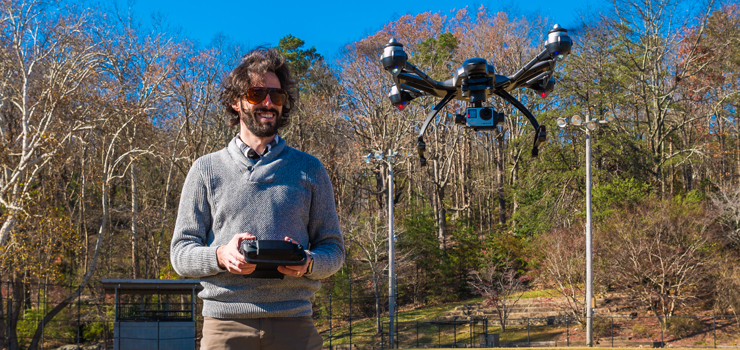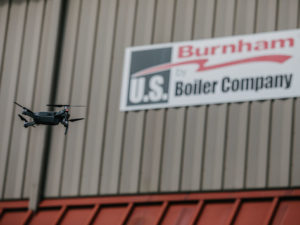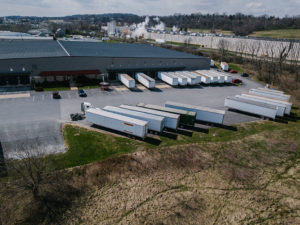In case you missed it, last month’s issue of the US Boiler Report featured an article about the use of drone technology in the HVAC trade.
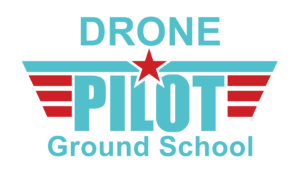 Alan Perlman, founder of Drone Pilot Ground School, weighed in with some additional information about operating drones commercially and acquiring a professional drone pilot’s license from the Federal Aviation Administration (FAA). It also discussed the online training that Drone Pilot Ground School offers to greatly simplify the process of learning the material needed to pass the FAA Aeronautical Knowledge Test.
Alan Perlman, founder of Drone Pilot Ground School, weighed in with some additional information about operating drones commercially and acquiring a professional drone pilot’s license from the Federal Aviation Administration (FAA). It also discussed the online training that Drone Pilot Ground School offers to greatly simplify the process of learning the material needed to pass the FAA Aeronautical Knowledge Test.
The following is a Q&A session with Alan, covering the subject more thoroughly.
If this is a topic that interests you, it would be a good idea read Drones Find Work in the Trades (Part 1).
Tell us a little about yourself.
Back in 2014, I started a company called UAV Coach to help people avoid the mistakes I made when I first got into sUAS / drones.
Like many in the drone industry, I didn’t start out full-time. I was working at a publicly-traded marketing software company, building out and managing a certification program for their customers. Prior to that, I traveled to 50+ countries as a cost-of-living research analyst and was based in Boston.
When the time was right, I left my job to focus on the drone industry full-time. I grew up in Nashville, TN, and recently moved back here with my wife, who is also my business partner, and our son Miles.
Why did you create Drone Pilot Ground School?
While running UAV Coach, I’d often get emails from our community members and email subscribers about training and about operating under the FAA rules. I spent a lot of time on the FAA—or Federal Aviation Administration—website and poring through regulatory documents.
I saw the new Part 107 regulatory framework coming, which now includes the multiple-choice test. We thought there might be an opportunity to create a test prep course. We put up a page with an interest form and emailed it out to our community members, and the response we got was overwhelmingly positive.
So we hired an FAA-certified flight instructor (for traditional manned aircraft), and got to work building out our curriculum and training approach.
What does Drone Pilot Ground School offer that other similar online programs do not?
For better or worse, the bar to become an FAA-certified drone pilot is relatively low. Right now, it’s just a multiple-choice test. Longer term, I’d love to see some kind of flight proficiency check added into the certification process. For now, as long as you’re 16 years old, can read and write English, have a clean record for the last 12-18 months and can pass a 60-question multiple-choice test, you can become an FAA-certified drone pilot.
There are many ways to prepare for the Aeronautical Knowledge Test. The FAA has published its own study guide. There are also free YouTube videos and workbooks available. Everybody learns a little bit differently, and we recognize that. Drone Pilot Ground School is a premium online course, and it may not be the best fit for everyone.
When we built the school initially, our hypothesis was that we could save our students a lot of time by telling them what they really need to know, while also teaching beyond the test. We wanted to explain why the material is important and weave that material into real-world flight operations… not just how to memorize test questions and answers.
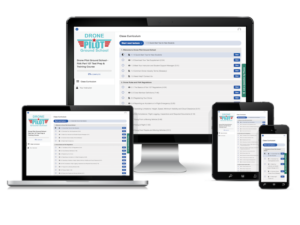 There are a lot of good online programs out there, and I’ve gone through most of them. Each one, ourselves included, takes very dense FAA materials and distills them into bullet points and videos. I think our videos are fantastic – they’re professionally produced and have motion graphics to illustrate various concepts. Most of the videos are short and super digestible.
There are a lot of good online programs out there, and I’ve gone through most of them. Each one, ourselves included, takes very dense FAA materials and distills them into bullet points and videos. I think our videos are fantastic – they’re professionally produced and have motion graphics to illustrate various concepts. Most of the videos are short and super digestible.
Our practice questions are real FAA practice questions, and we benefit from the 10,000+ students who have already gone through our program. This provides valuable feedback. We leverage this feedback to strengthen the program. By doing so, our track record is phenomenal. Drone Pilot Ground School is very much a dynamic product with active support. I just added new practice questions into the course last week!
I’m most proud of our company support. I think that’s where we’re truly different from everyone else. I have phone conversations with students every single day, and our Student Support Manager helps me with voice messages and email support. We always like to let our new students know that, just because our program is self-paced and the videos are all pre-recorded, there are real humans behind the course and that we’re more than happy to answer any questions you have. These questions do not have to be just about the test itself, but the greater drone industry.
What’s the most common feedback you receive?
We have several hundred reviews and 99% of them are 4 or 5 stars. The most common feedback we receive is something like, “I didn’t know anything about aviation, airspace, loading and performance, or weather and micrometeorology before I started this program, but you really broke those topics down for me. Not only did I pass my test, but I’m excited to be a professional drone pilot.”
It makes me so happy that people are not only passing their tests, but they’re learning why this material is important and how to apply it.
What are some commercial uses/trends for drones that you expect to emerge over the next five years?
Where the use of drones has been slow to adopt in past years is where we could see a lot of new growth going forward. I’m very bullish on public safety, specifically police and fire departments.
These departments are fighting for budget and stakeholder buy-in. The systems they’re using might be more expensive than those used by someone who’s snapping photos or putting together basic orthomosaic maps for their clients.
Among other industries that show a lot of potential for growth are agriculture and surveying, along with a wide variety of other, small, random uses of drones, like wildlife conservation and management, reforestation, insurance adjustments, etc.
Above: A drone captures aerial footage of U.S. Boiler Company’s manufacturing plant and warehouse located in Lancaster, PA.
Do you foresee any major changes in drone legislation coming in the next few years?
I expect more clarity surrounding the existing Part 107 waiver process for things like requesting to fly over people or to fly beyond visual line-of-site. These applications are all currently being evaluated on a case-by-case basis. Certain waivers are easier to apply for than others, like requesting to fly at night. This is because the FAA has done a really good job of publishing performance-based standards and has a tried-and-true model for risk management.
Flying over people and beyond visual line-of-sight are more sensitive missions where the FAA doesn’t necessarily have enough data or a mature-enough risk profile to offer a more streamlined approval process. Over the next few years, we’ll hopefully see more clarity and efficiency in this process for companies that want to do things that require exemption from Part 107 regulations.
I don’t think we’ll see changes to the core Part 107 regulations, but we’re likely going to see a great deal of movement concerning local regulations. This will involve what’s happening at the state, city and county levels. There are a lot of municipalities trying to figure this out and appease concerned citizens. We’ve already seen some of this happen. For example, in North Carolina, an operator has to register with NCDOT and pass a state test. There will be more layers of local regulations over the next few years.
What is the largest misconception that people who want their commercial UAV pilot certificate have?
Most people think they’ll spend their time flying. That’s the fun part, right? The sad reality of being a professional remote pilot-in-command is that very little of what you’re doing is flying. A large portion of the job is airspace research, getting regulatory approval, working with other parties, setting up the shot, thinking about where you want to land and take off from, setting up emergency zones, mitigating risk with crew members, going through a pre-flight checklist, and monitoring software. And then of course, there is the data-processing once you land. Rendering data and editing photos or footage can be time consuming and require a separate set of software and creative acumen.
I think most folks who want to become professional drone pilots don’t necessarily know this. It’s less dual-joystick flying and more becoming a master of your flight software and the operational processes required for safe, efficient flight missions and end-product delivery.
What’s the most surprising commercial use of UAS that you’ve encountered?

Waves from the Atlantic Ocean crash against a scenic beach on Cape Cod, Massachusetts. This sandy peninsula is known for its many Great White sharks.
Shark monitoring is pretty cool. Lifeguards are doing this in Australia and I think in places off the Atlantic Coast as well. In these areas, part of the traditional duty of a lifeguard would be to get on a jet ski and to patrol for sharks. This could take hours. Now, you could throw a drone up in the air and get it done in minutes.
Another cool example is one of our students who uses drones to preserve archeological sites. He then creates a 3D model of the site that’s accessible for students in his community.
Every couple of weeks, someone reaches out to us and tells us about some really cool application. I’m continuously surprised by the creativity of the people in this industry.
In your opinion, what are the largest pitfalls/mistakes that commercial drone pilots make?
That’s tough. Many of our students are trying to start aerial service businesses, and I think a lot of them go about this in the wrong way. They spend a lot of time getting a business listing, perfecting their business cards, setting up their website, etc. Rather, why not get out there and pick up the phone, knock on doors, reach out to your network—basically, focus more on sales, less on marketing.
Not everyone out there is trying to build their own drone business, however. For folks who are already embedded in companies and starting UAS programs internally, one of the biggest mistakes we see is failing to embrace what it means to have a “pilot mindset.” Pilots are all about mitigating risk and building process. Pilots love checklists and specific operating procedures. You spend 95 percent of your energy as a pilot thinking about what can go wrong and preparing for that worst-case scenario. Pilots are trained to handle all sorts of ridiculous situations. It’s why guys like Sully are able to safely land on the Hudson.
I think not enough commercial drone pilots have had enough experience flying, myself included. Do we really know all the different things that can go wrong? I think the whole industry is kind of challenged by that. It’s all very new, and we’re all trying to approach these missions with a safety mindset.
Are commercial operators in the United States obligated to carry liability insurance?
There are a few U.S. states that require liability insurance, but generally speaking, no. It is, however, considered a best practice. The vast majority of jobs out there are going to require at least $1 million in liability coverage. That seems to be the benchmark for most of the flights out there, but some industries and specific missions can require much more coverage.
Any other advice for those seeking to get their certification?
In this industry, it’s more important than ever to set your own standards, and to set them extremely high. I think that people who want to be in this industry long term need to take training very seriously. It’s a firehose of information when you’re evaluating the hardware, the software, the regulations, your competition, and where you fit in.
I think it’s really important for people to constantly be educating themselves. I don’t want to diminish the value of our program or what the FAA has done in creating Part 107, but passing the test is pretty straightforward. It’s not rocket science.
A lot of people stop with the test, and that’s unfortunate because it’s really just the tip of the iceberg. So my advice to people seeking their FAA Remote Pilot Certificate is don’t just seek certification, seek certification AND everything else that comes with operating a sUAS professionally. We’re all mavericks in this industry. It’s all new. Thinking ahead 20 years from now, it’s really on us to be evangelists for things like safety, education, and doing it right.
Alan Perlman, principal course instructor at the Drone Pilot Ground School, is an FAA-certified drone pilot and logs flight hours on a wide variety of models and reports on drone regulations, new technology, and other industry developments at UAV Coach, which he founded back in 2014 to help new drone pilots break into the sUAS industry.

